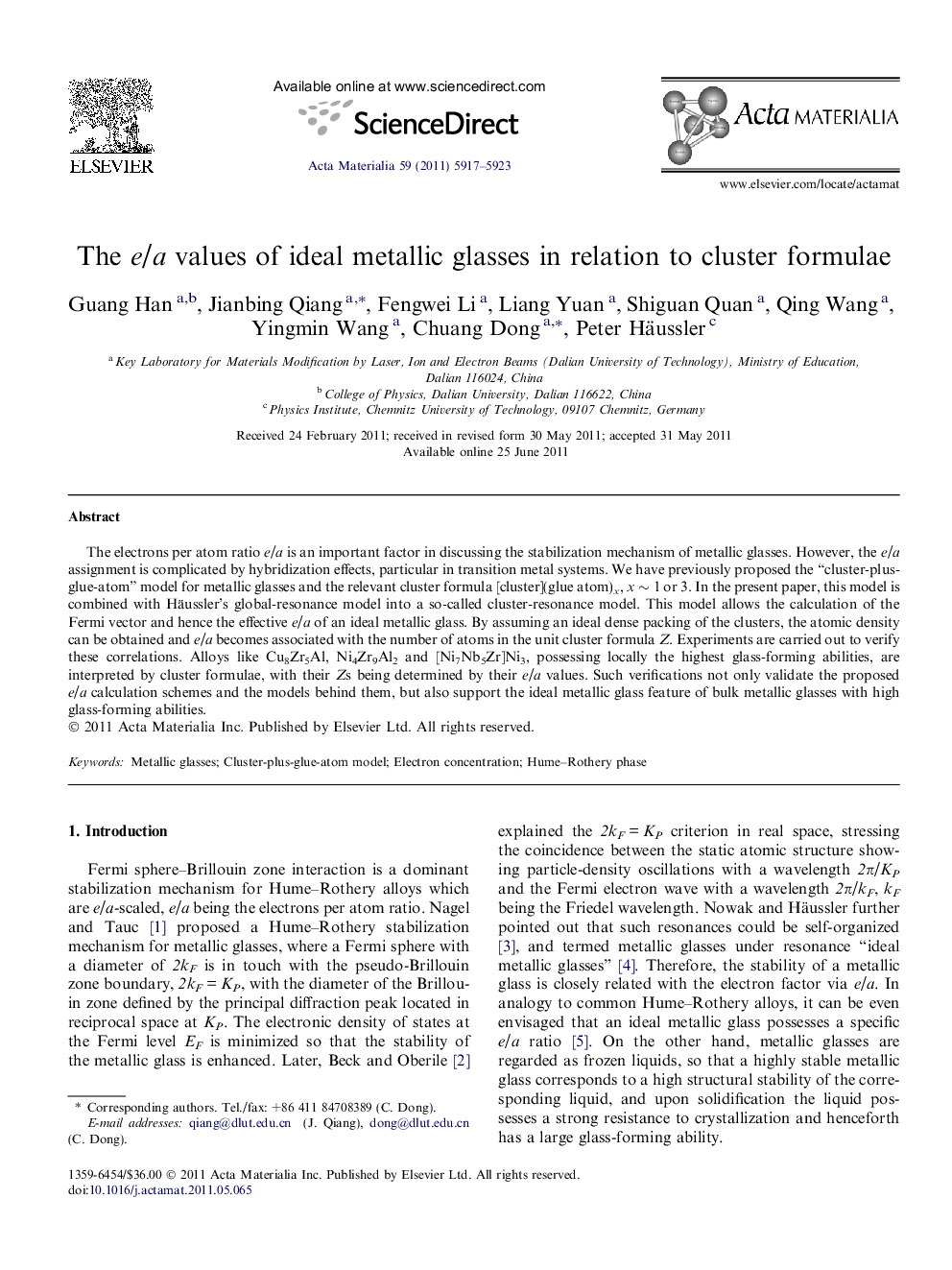| Article ID | Journal | Published Year | Pages | File Type |
|---|---|---|---|---|
| 1447460 | Acta Materialia | 2011 | 7 Pages |
The electrons per atom ratio e/a is an important factor in discussing the stabilization mechanism of metallic glasses. However, the e/a assignment is complicated by hybridization effects, particular in transition metal systems. We have previously proposed the “cluster-plus-glue-atom” model for metallic glasses and the relevant cluster formula [cluster](glue atom)x, x ∼ 1 or 3. In the present paper, this model is combined with Häussler’s global-resonance model into a so-called cluster-resonance model. This model allows the calculation of the Fermi vector and hence the effective e/a of an ideal metallic glass. By assuming an ideal dense packing of the clusters, the atomic density can be obtained and e/a becomes associated with the number of atoms in the unit cluster formula Z. Experiments are carried out to verify these correlations. Alloys like Cu8Zr5Al, Ni4Zr9Al2 and [Ni7Nb5Zr]Ni3, possessing locally the highest glass-forming abilities, are interpreted by cluster formulae, with their Zs being determined by their e/a values. Such verifications not only validate the proposed e/a calculation schemes and the models behind them, but also support the ideal metallic glass feature of bulk metallic glasses with high glass-forming abilities.
